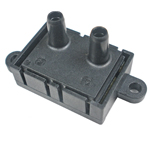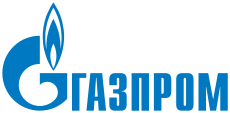Артикул: HAFBLF0200C2AX3
Наименование: Honeywell Zephyr™ Digital Airflow Sensors: HAF Series-High Accuracy, bidirectional flow, long port, fastener mount, 0 SCCM to 200 SCCM flow range, digital I?C address: 0x29, 5.0 Vdc supply voltage || HAFBLF0200C2AX3
Производитель: Honeywell
|
|

Description Honeywell Zephyr™ HAF Series sensors provide a digital interface for reading airflow over specified full-scale flow and compensated temperature ranges. The thermally isolated heater and temperature sensing elements help these sensors provide a fast response to air or gas flow. Zephyr sensors are designed to measure mass flow of air and other non-corrosive gases. Standard flow ranges are available at ±50, ±100, ±200, ±400 or ±750 SCCM. Custom flow ranges are also available. The sensors are fully calibrated and temperature compensated with an onboard Application Specific Integrated Circuit (ASIC). The HAF Series is compensated over the temperature range of 0 °C to 50 °C [32 °F to 122 °F] and operates across a temperature range of -20 °C to 70 °C [-4 °F to 158 °F]. The state-of-the-art ASIC-based compensation provides digital (I2C) outputs with a response time of 1 ms. These sensors operate on the heat transfer principle to measure mass airflow. They consist of a microbridge Microelectronic and Microelectromechanical System (MEMS) with temperature-sensitive resistors deposited with thin films of platinum and silicon nitride. The MEMS sensing die is located in a precise and carefully designed airflow channel to provide repeatable response to flow. Zephyr sensors provide the customer with enhanced reliability, high accuracy, repeatable measurements and the ability to customize sensor options to meet many specific application needs. The combination of rugged housings with a stable substrate makes these products extremely robust. They are designed and manufactured according to ISO 9001 standards. Features - Total Error Band (TEB) as low as ±0.25 %FSS allows for precise airflow measurement, often ideal for demanding applications with high accuracy requirements
- Fast response time allows a customer's application to respond quickly to airflow change, important in critical medical (e.g., anesthesia) and industrial (e.g., fume hood) applications
- Wide range of airflows: Zephyr measures mass flow at standard flow ranges of ±50, ±100, ±200, ±400 or ±750 SCCM, or custom flow ranges, increasing the options for integrating the sensor into the application
- Customizable flow ranges and configurable package styles meet specific end-user needs
- Full calibration and temperature compensation typically allow customer to remove additional components associated with signal conditioning from the PCB, reducing PCB size as well as costs often associated with those components (e.g., acquisition, inventory, assembly)
- High sensitivity at very low flows provides for faster response time at the onset or cessation of flow
- Linear output provides a more intuitive sensor signal than the raw output of basic airflow sensors, which can help reduce production costs, design, and implementation time
- High stability reduces errors due to thermal effects and null shift to provide accurate readings over time, often eliminating need for system calibration after PCB mount and periodically over time
- Low pressure drop typically improves patient comfort in medical applications, and reduces noise and system wear on other components such as motors and pumps
- High 12-bit resolution increases ability to sense small airflow changes, allowing customers to more precisely control their application
- Low 3.3 Vdc operating voltage option and low power consumption allow for use in battery-driven and other portable applications
- ASIC-based I2C digital output compatibility eases integration to microprocessors or microcontrollers, reducing PCB complexity and component count
- Insensitivity to mounting orientation allows customer to position sensor in most optimal point in the system, eliminating concern for positional effects
- Insensitivity to altitude eliminates customer-implemented altitude adjustments in the system, easing integration and reducing production costs by not having to purchase additional sensors for altitude adjustments
- Small size occupies less space on PCB, allowing easier fit and potentially reducing production costs, PCB size may also be reduced for easier fit into space-constrained applications
- RoHS-compliant materials meet Directive 2002/95/EC
| Potential Applications Medical: - Anesthesia delivery machines
- Ventricular assist devices (heart pumps)
- Hospital diagnostics (spectrometry, gas chromatography)
- Nebulizers
- Oxygen concentrators
- Patient monitoring systems (respiratory monitoring)
- Sleep apnea machines
- Spirometers
- Ventilators
- Laparoscopy
Industrial: - Air-to-fuel ratio
- Analytical instrumentation (spectrometry, chromatography)
- Fuel cells
- Gas leak detection
- VAV system on HVAC systems
- Gas meters
- HVAC filters
| | Product Specifications | | Signal Conditioning | Amplified | | Flow/Pressure Range | 0 SCCM to 200 SCCM | | Port Style | Long | | Series Name | HAF | | Response Time | 1 ms typ. | | Supply Voltage | 3.3 Vdc | | Power Consumption | 23 mW (no load) | | Operating Temperature | -20 °C to 70 °C [-4 °F to 158 °F] | | Storage Temperature | -40 °C to 125 °C [-40 °F to 251 °F] | | Media Compatibility | Dry gas only | | Availability | Global | | Comment | Nitrogen calibration gas | | UNSPSC Code | 41111931 | | UNSPSC Commodity | 41111931 Flow Sensors |
|














